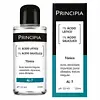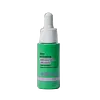Principia Tônico AL-7 Versus Sallve Óleo Antiacne
What's inside
What's inside
 Key Ingredients
Key Ingredients

 Benefits
Benefits

 Concerns
Concerns

 Ingredients Side-by-side
Ingredients Side-by-side

Hydrogenated Farnesene
EmollientCaprylic/Capric Triglyceride
MaskingSimmondsia Chinensis Seed Oil
EmollientHelianthus Annuus Seed Oil
EmollientSalicylic Acid
MaskingArgania Spinosa Kernel Oil
EmollientNigella Sativa Seed Oil
EmollientEthyl Linoleate
EmollientMelaleuca Alternifolia Leaf Oil
Antioxidant4-Terpineol
MaskingPhenylethyl Resorcinol
AntioxidantTocopherol
AntioxidantMethylpropanediol
SolventLecithin
EmollientCaprylyl Glycol
EmollientRosmarinus Officinalis Leaf Extract
AntimicrobialGlycine Soja Oil
EmollientSalix Alba Bark Extract
AstringentHydrogenated Farnesene, Caprylic/Capric Triglyceride, Simmondsia Chinensis Seed Oil, Helianthus Annuus Seed Oil, Salicylic Acid, Argania Spinosa Kernel Oil, Nigella Sativa Seed Oil, Ethyl Linoleate, Melaleuca Alternifolia Leaf Oil, 4-Terpineol, Phenylethyl Resorcinol, Tocopherol, Methylpropanediol, Lecithin, Caprylyl Glycol, Rosmarinus Officinalis Leaf Extract, Glycine Soja Oil, Salix Alba Bark Extract
 Reviews
Reviews

Ingredients Explained
These ingredients are found in both products.
Ingredients higher up in an ingredient list are typically present in a larger amount.
Caprylyl Glycol is a humectant and emollient, meaning it attracts and preserves moisture.
It is a common ingredient in many products, especially those designed to hydrate skin. The primary benefits are retaining moisture, skin softening, and promoting a healthy skin barrier.
Though Caprylyl Glycol is an alcohol derived from fatty acids, it is not the kind that can dry out skin.
This ingredient is also used as a preservative to extend the life of products. It has slight antimicrobial properties.
Learn more about Caprylyl GlycolSalicylic Acid (also known as beta hydroxy acid or BHA) is a well-known ingredient for treating skin that struggles with acne and clogged pores. It exfoliates both the skin's surface and deep within the pores to help clear out buildup, control oil, and reduce inflammation.
Unlike AHAs (alpha hydroxy acids), salicylic acid is oil-soluble. This allows it to penetrate into pores which makes it especially effective for treating blackheads and preventing future breakouts.
Salicylic acid is also known for its soothing properties. It has a similar structure to aspirin and can calm inflamed or irritated skin, making it a good option for acne-prone skin that is also sensitive.
Concentrations of 0.5-2% are recognized by the U.S. FDA as an over-the-counter topical acne product.
It can cause irritation and/or dryness if one's skin already has a compromised moisture barrier, so it's best to focus on repairing that before introducing this ingredient into your routine.
While salicylic acid does not increase sun sensitivity, it’s still important to wear sunscreen daily to protect your skin.
If you are looking for the ingredient called BHA or Butylated Hydroxyanisole, click here.
Learn more about Salicylic Acid